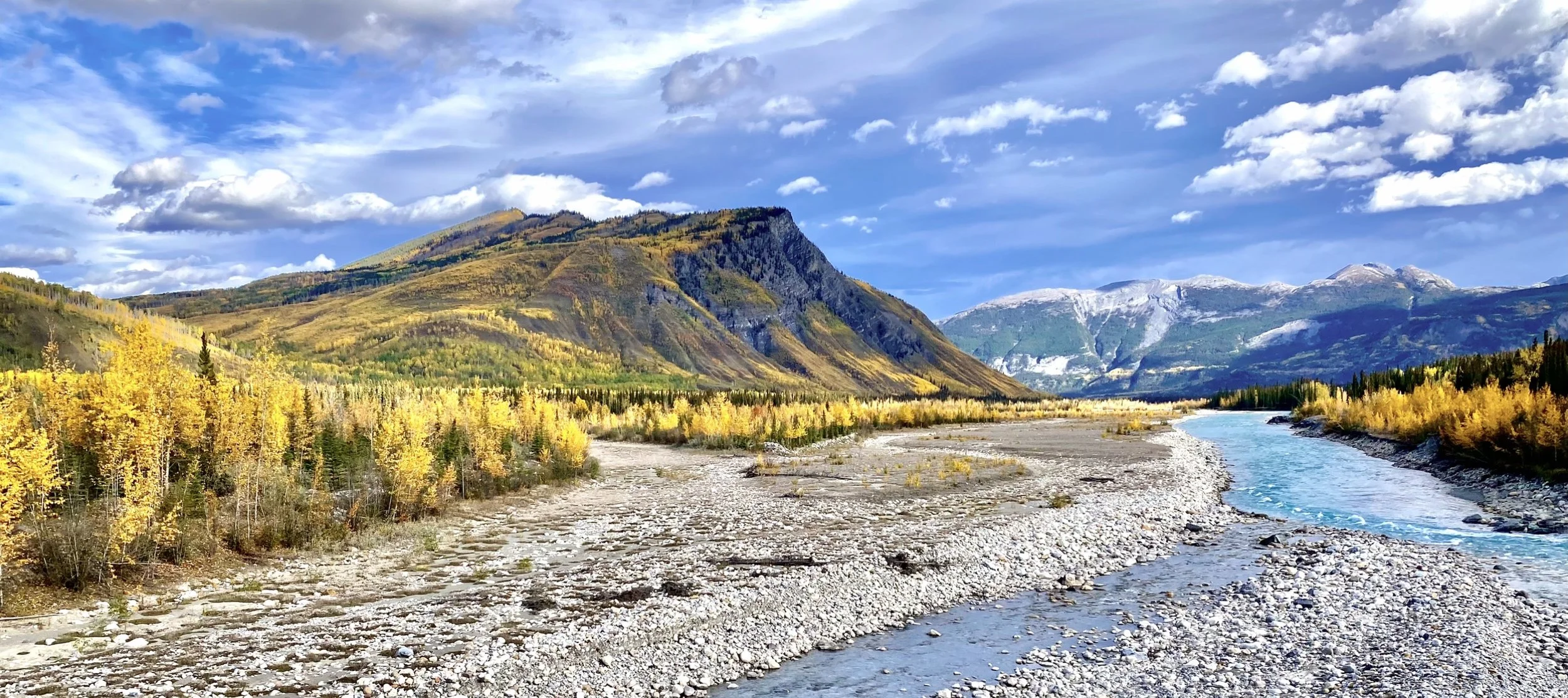Autumn SPLENDOR And The 60th Parallel
September 23, 2022
Our 8,200 kilometre route.
Setting off with confidence
Finally, after only a few short trips in the truck since Covid landed in early 2020, we were able to get away to the north for a decent journey.
With all the upgrades and repairs done and tested to the point where we felt an extended trip into the Canadian far north was doable, we loaded the truck and headed off confident that the improvements we made to the water system and truck cab body mounts would keep us moving forward.
We’ve crossed the 60th Parallel numerous times, but this is the first time in a location that makes a big deal of it. Hence the large sign. The flags are at half mast in respect to the Queen’s passing.
Our intention for this trip was to finally make it to the Arctic Ocean at Tuktoyaktuk in the Northwest Territories (NWT). A destination that we’ve tried unsuccessfully twice before to reach, and is only accessible by going north through the Yukon and crossing into the NWT at its northern tip. There are no roads in the NWT that connect the road system in the southern part to those in the north. So one has to transit through the Yukon.
Unfortunately for us, the eastern route up the Alaskan Highway was blocked because of damage to a bridge that reduced its weight capacity to only 15,000 kilograms. Since our rig weighs 20,000 kilograms when fully loaded, that route wasn’t an option. So we’d have to travel up the Stewart Cassiar Highway in the west in order to hook back up to the Alaskan Highway at Watson Lake. Sadly, there was another problem for us. High up on the Dempster Highway, past Eagle Plains, another bridge was damaged and closed to all traffic in both directions. Yukon511, the online road report site for travel in the Yukon showed that repairs were needed, but there was no estimate as to when the bridge would be open for traffic. So as not to delay our departure, we elected to travel up through Alberta into the lower Northwest Territories, and explore that region with the hope it would provide time for repairs to be done on the bridge that would allow us to reach Tuk in a few weeks time.
AnOther Reason For This Journey
Heading east from Jasper, Alberta, you can see the smoke building as we approach yet another fire burning only a few miles east of the park.
Aside from our main intent on reaching the Arctic Ocean, there was another reason for abandoning the big city… smoke. Not only did we have to endure record high heat throughout most of the summer, we also were burdened with relentless wildfire smoke coming at us both from the interior of B.C. and from Washington State. In early September the smoke was so thick that we couldn’t see across Vancouver’s outer harbour, and we recorded the worst air quality anywhere in the world. Being on the edge of the Pacific Ocean, that’s really saying something. So we hoped that by traveling north we’d be able to get some clean air. Unfortunately that didn’t happen until we got to northern Alberta. There were just too many fires spread out along our route.

